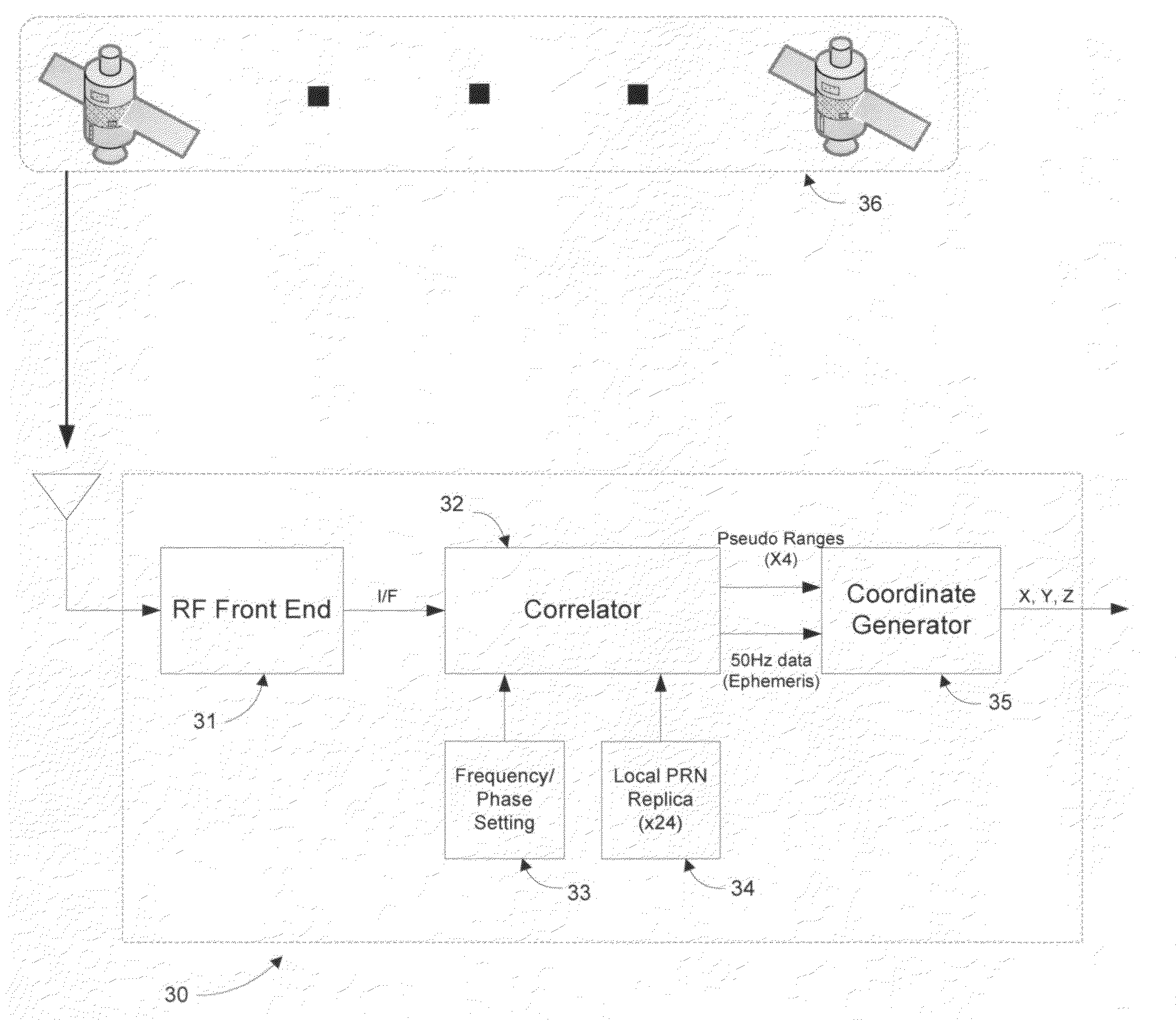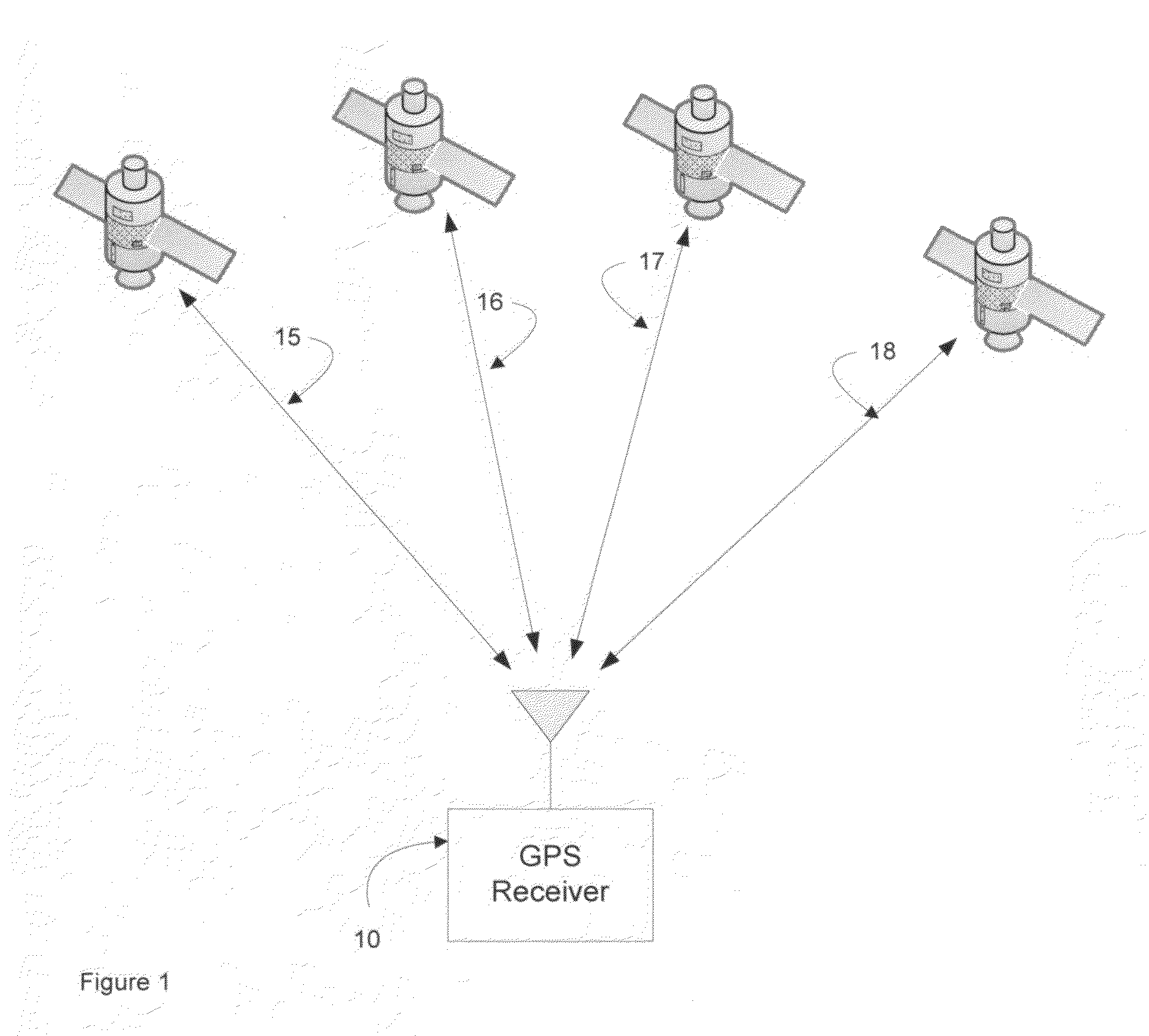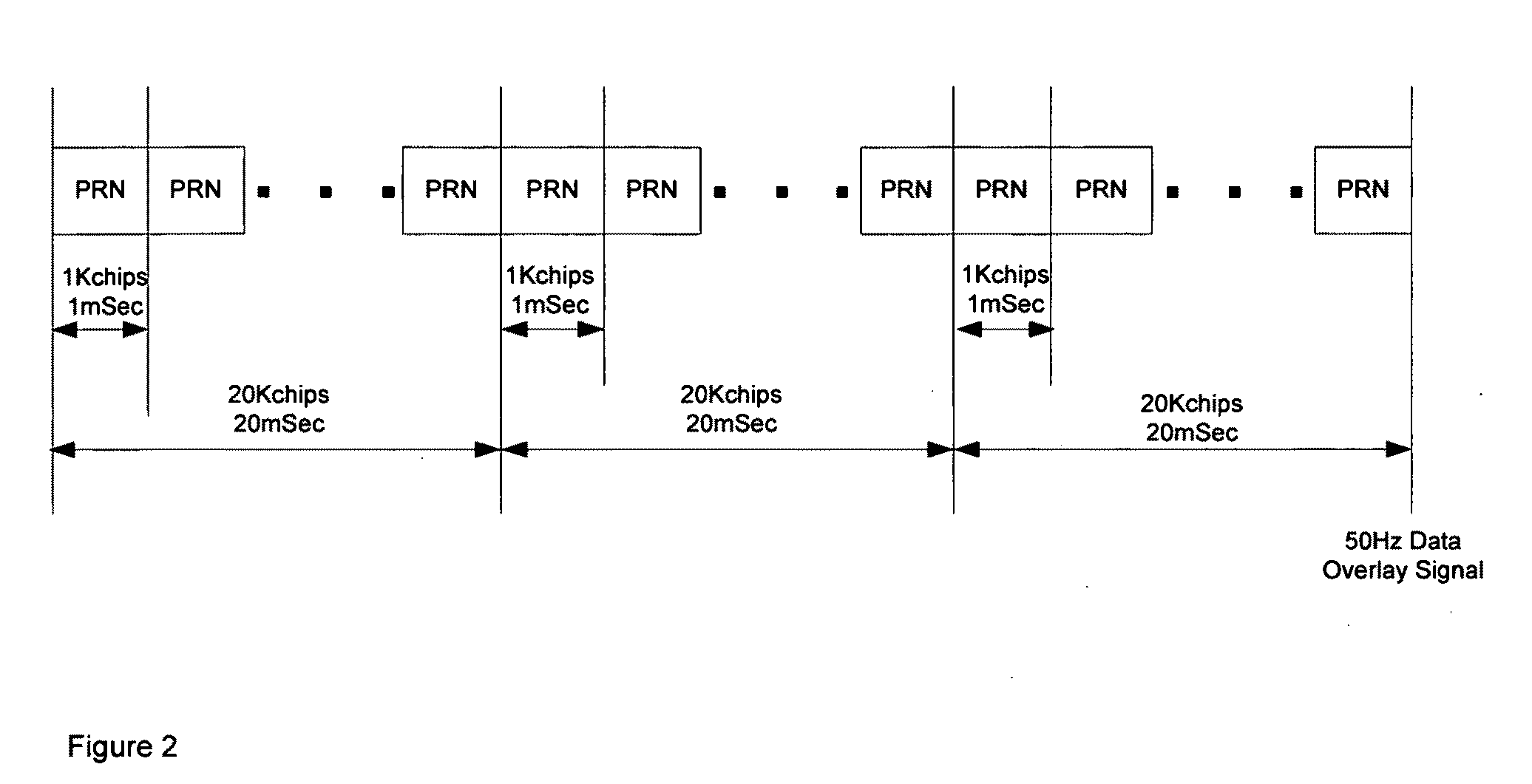Signal processing techniques for improving the sensitivity of GPS receivers
- Summary
- Abstract
- Description
- Claims
- Application Information
AI Technical Summary
Benefits of technology
Problems solved by technology
Method used
Image
Examples
Embodiment Construction
[0048]In general, the object of the present invention is to provide methods and apparatus to increase the receive sensitivity of GPS receivers in order to provide for the reliable determination of location coordinates in indoor and urban canyon operation. To this end, novel signal processing techniques reducing the minimum signal strength required to acquire a satellite in indoor and urban canyon environments are disclosed. The use of multiple GPS sensors provides the conceptual framework for such techniques. In this context, GPS sensors are characterized as one of two types: target GPS sensors, whose location is to be determined; and reference GPS sensors, used in the derivation of a reference used to increase the receive sensitivity of target GPS sensors.
[0049]The reduction in the minimum signal strength required to acquire a satellite (characterized as an increase in receive sensitivity) results from innovations in signal processing, enabled by the rearchitecting of prior art GPS...
PUM
 Login to View More
Login to View More Abstract
Description
Claims
Application Information
 Login to View More
Login to View More - R&D
- Intellectual Property
- Life Sciences
- Materials
- Tech Scout
- Unparalleled Data Quality
- Higher Quality Content
- 60% Fewer Hallucinations
Browse by: Latest US Patents, China's latest patents, Technical Efficacy Thesaurus, Application Domain, Technology Topic, Popular Technical Reports.
© 2025 PatSnap. All rights reserved.Legal|Privacy policy|Modern Slavery Act Transparency Statement|Sitemap|About US| Contact US: help@patsnap.com



